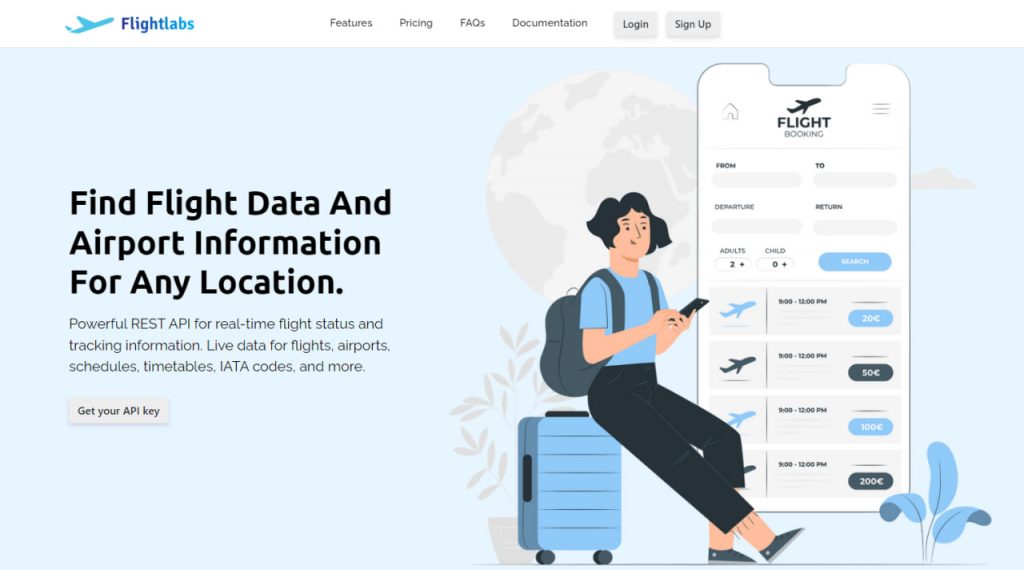In a world where airlines are still recovering from the blow that was the pandemic, travel agencies need to stay ahead of the curve to provide customers with the best travel options available. One way to achieve this is by using an API (Application Programming Interface) to look up information about different airlines.
By utilizing an airline API, travel agencies can access real-time data on flight schedules, prices, and availability for multiple airlines. This information can be crucial in providing customers with accurate and up-to-date travel options. APIs also provide easy access to an airline’s logo, IATA code, and other relevant information, making it easier to identify and compare different airlines.

One of the significant benefits of using an airline API is the ability to streamline the booking process. With real-time access to flight data, travel agents can quickly search for and book flights that best meet their clients’ needs. The API can also provide valuable insights into customer preferences and behaviors, allowing travel agents to tailor their recommendations to meet the unique needs of each client.
If you want to stand out from the crowd, you can provide the best customer experience possible by incorporating FlightLabs into your app or website.
About Flightlabs, And How It Can Help You
FlightLabs is an API that allows real-time access to a range of flight data, including flight schedules, pricing, availability, and more. It is specifically designed for airlines, travel agencies, and other industry players who want to integrate this information into their systems and workflows to improve the travel experience for their customers.
Another advantage of using FlightLabs as their airline API of choice is that it can help travel agents save time and reduce costs. By automating the process of searching for flight information, travel agents can free up time to focus on other aspects of the travel booking process. Additionally, the API eliminates the need to manually update flight information, reducing the chance of errors and inaccuracies.
FlightLabs can also help travel agencies expand their offerings by providing access to a more extensive range of airlines. This can be especially valuable for smaller travel agencies looking to compete with larger players in the industry. With this API, travel agents can quickly compare prices and availability across multiple airlines, offering customers more options and greater flexibility.
How Does This API Work?
With FlightLabs, users can easily search for flights based on various criteria, such as flight number, origin, destination, and date. The API provides accurate and up-to-date flight data, including updates on flight status and airport coordinates. It also allows users to track the progress of their flights and receive real-time updates on their status.
The integration of FlightLabs with existing systems and applications is effortless, as it supports multiple programming languages. Therefore, it is an excellent option for those who want a dependable and user-friendly flight data API.
For a short example of what the API provides as output, here have an example of an endpoint that provides general data on the Aachen Merzbrück Airfield, located in Germany. This falls under the “Airports” category of calls that the API can provide:
{
"data": [
{
"GTM": "1",
"airportId": 7,
"codeIataAirport": "AAH",
"codeIataCity": "AAH",
"codeIcaoAirport": "EDKA",
"codeIso2Country": "DE",
"geonameId": "3207669",
"latitudeAirport": 50.75,
"longitudeAirport": 6.133333,
"nameAirport": "Aachen/Merzbruc",
"nameCountry": "Germany",
"phone": "",
"timezone": "Europe/Berlin"
},
[...]
]
}
If you are interested in improving your business, the flexibility of FlightLabs will do it for you. You can take to the skies with it by following these instructions:

Create an account at https://goflightlabs.com. Then select your desired endpoint or enter the IATA or ICAO code of airports or airlines.
Use these codes and then call the API. You can get a unique API key on your account dashboard.
Finally, press the “Run” button and you’re ready! The API response will be on your screen. You can also choose a programming language.

